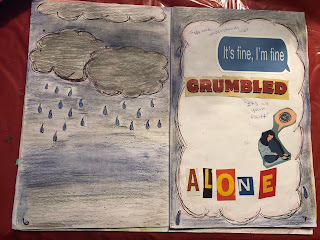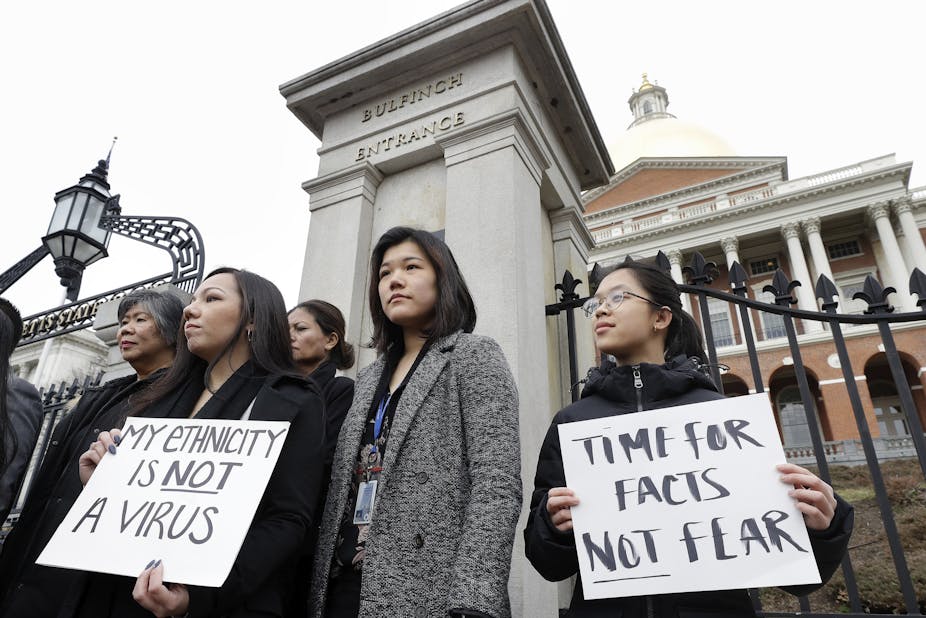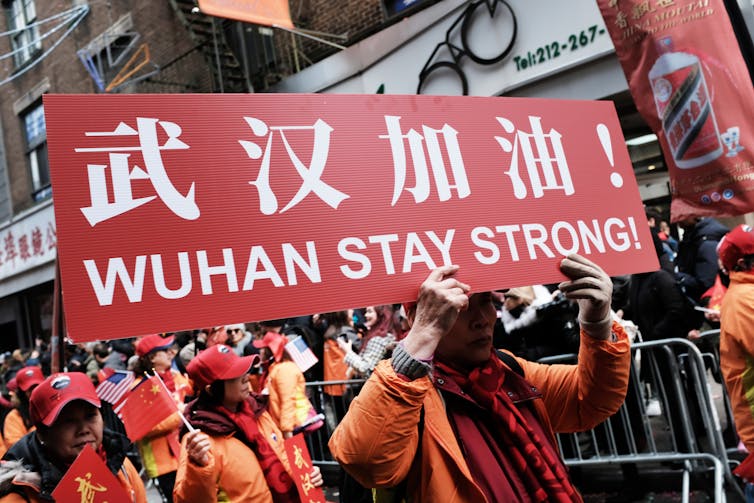Raven Dickson
Prof. Cacoilo
Acts Of Resistance
22, April 2020
The topic of my semester project is mental health awareness and my final product of the project is a mental health zine. I chose this topic because I’m a passionate advocate for mental health and want to pursue a career in Clinical Psychology, which involves working with patients that have mental disorders. I’ve personally been battling with my mental health since I was 14 and know of people in my life who are battling it too, especially during the recent events of the COVID-19 pandemic outbreak. My target audience for this project range from young adolescents to adults. According to the Mental Health First Aids, it’s stated that “Half of all mental disorders begin by age 14 and three-quarters by age 24”(Mental Health First Aid "5 Surprising Mental Health Statistics" 2019). I wanted to provide as much information, resources, and awareness as possible since there was a lack of that during my early teen years.
Final Project - Mental Health Awareness Zine
The topic of my semester project is mental health awareness and my final product of the project is a mental health zine. I chose this topic because I’m a passionate advocate for mental health and want to pursue a career in Clinical Psychology, which involves working with patients that have mental disorders. I’ve personally been battling with my mental health since I was 14 and know of people in my life who are battling it too, especially during the recent events of the COVID-19 pandemic outbreak. My target audience for this project range from young adolescents to adults. According to the Mental Health First Aids, it’s stated that “Half of all mental disorders begin by age 14 and three-quarters by age 24”(Mental Health First Aid "5 Surprising Mental Health Statistics" 2019). I wanted to provide as much information, resources, and awareness as possible since there was a lack of that during my early teen years.
I chose to create a zine as my outreach in advocating for mental health because I see art as a form of therapy and creative expression. I'd use it as a way to cope with my emotions at times and express thoughts that are too overwhelming to say aloud. I wanted to visually showcase relatability to the audience of what could cause emotions such as stress to occur, how it can fester, and take a toll on your mental health without proper help. For the distribution of the project, I believe that it’s a creative, convenient, and effective way to share information with others. In prior to the quarantine lockdown, I planned on sharing my project by having a certain amount of physical copies of the zine made, having a digital version of the zine made to share on all of my social media platforms, and promote it to the psychology departments and clubs on campus. Now due to the current circumstances, we’re in, I would create a physical re-edited version of the zine, scan the pages if possible, make it into a PDF file, and still share it on all of my social media platforms especially since everyone is on it now more than usual.
Clouds are the overall aesthetic for this zine because of how they symbolize wandering thoughts and emotions, specifically low ones. I personally dedicated this zine to my family, friends, peers, and anyone who struggles with their mental health. I also dedicated this to my younger-self since this is something I would give to her to help comfort her, inform her of mental disorders, and encourage the importance of taking care of your mental health.
 |
| Cover Page |

The first portion of the zine is a visual personal narrative based on my experiences of dealing with mental health. I have illustrations of different types of clouds in parallel to collages I’ve made to represent the mood of them. Throughout the narrative, there’s the progression of how my negative emotions could fester and how it’s expressed (i.e: Pages 6 & 7 with the rainclouds to encompass sad and sullen emotion). To conclude the narrative, I illustrated a transparent umbrella that's coming from a storm and entering the clear yet cloudy weather. It symbolizes how you'll have those days when you get swamped in the storm of negative emotions but it won't last long for there is hope in conquering it and seeing the brighter days.
The second portion of the zine is facts about other mental disorders. The ones I’ve included are Anxiety Disorders, Depression/Mood Disorders, Dissociative Disorders, Personality Disorders, and Posttraumatic Stress Disorder. The information is provided by some of the 10 sources I’ve listed for the project overall.



The third portion of the zine is related to different coping mechanisms for dealing with symptoms of mental disorders.
The final page of the zine is a referral list of various mental health resources such as organization websites and hotlines.

This project was suited for my professional aspirations because it coincides with my future profession, Clinical Psychology. The project would be great for me to reference going into that field of psychology since it’s related to mental health; showing my passion, further knowledge, and understanding of the topic. In doing this project, I’m encouraged to contribute in taking a direct approach in advocating for this cause rather than doing so from afar like I usually do. As an artist, it provides me with more practice and experience with different art forms and experimenting with the concept of zines. I’ll also have new content created to add to my professional art portfolio.
Although I have yet to distribute the project and receive much feedback, I’ve taken the need to change the form of the zine to still make it personal but more informative. I plan on making another version of the zine that would be easier to distribute, having fewer pages and a slightly different theme especially in honor of May being Mental Health Awareness Month. I’ll post an update soon.
Although I have yet to distribute the project and receive much feedback, I’ve taken the need to change the form of the zine to still make it personal but more informative. I plan on making another version of the zine that would be easier to distribute, having fewer pages and a slightly different theme especially in honor of May being Mental Health Awareness Month. I’ll post an update soon.
5 Artists (That influenced or inspired this project & connect with the topic) :
1). Elohim (singer, songwriter, and producer)
Pictured on the left is Elohim herself and on the right is the album cover artwork of her EP BRAINDEAD
Links:
- https://www.thefader.com/2018/04/27/elohim-interview
- https://www.billboard.com/articles/news/dance/8542034/elohim-interview-producer-20-questions
- https://www.instagram.com/elohim/?hl=en
2). Edvard Munch (Expressionist painter)
(Pictured on the left is Edvard Munch himself and on the right is his famous painting titled “The Scream”(1893)
Links:
3). Logic (rapper, songwriter, producer, and author)
(Pictured on the left is Logic himself and on the right is the album cover artwork for his single “1-800-273-8255” feat. Alessia Cara & Khalid)
Links:
- https://www.allmusic.com/artist/logic-mn0000829633/biography
- https://www.rollingstone.com/music/music-features/logic-talks-suicide-prevention-hit-coping-with-anxiety-star-wars-fandom-205328/
- https://themighty.com/2017/12/logic-hospitalized-derealization-disorder/
4). Kirsty Latoya (Illustrator, Poet, & Author)
(Pictured on the left is Kirsty Latoya herself and on the right is her digital piece titled “Stress”)
Links:
- http://www.kirzart.com/about
- http://www.kirzart.com/portfolio
- https://www.voicemag.uk/blog/4824/interview-with-kirsty-latoya-artist-poet-change-maker
- https://www.huffingtonpost.co.uk/kirsty-latoya/how-art-took-me-on-a-jour_b_16620442.html?guccounter=1&guce_referrer=aHR0cHM6Ly93d3cuZ29vZ2xlLmNvbS8&guce_referrer_sig=AQAAAIlapEFH0BtZpEQCLlaAvDZeh3UoUmeNZba-Eu9bUfpr0VRS_obM_gCr8OG2cS86toYNvJBIvRHH8IOCDZ5N7K6WjYbbW3bFGGC6PEEncIMZZBvINThD-9C3aLxxna1l8XYxy7oiJNoM5O26hVUg8hd4xHv5yJoQmq6O6dnfr1Xp
5). George J. Harding (Fine artist and oil painter)
(Pictured on the left is George J. Harding himself and on the right is his painting titled “Happiness Projected”.)
Links:
- https://www.georgejharding.co.uk/about/
- https://www.georgejharding.co.uk/art/self/#&gid=1&pid=21
- https://klmpersonalproject2012.wordpress.com/tag/george-harding/
When planning this project the first person that came to mind as inspiration was the musician, singer, songwriter, and producer Elohim. Elohim is a huge advocate for mental health especially since she suffers from anxiety, depression, and panic disorder. She uses her music and performing as a form of therapy for herself and fans that may suffer from mental illness, reminding them that they’re not alone in battling it. Another musical artist that inspired me for this project is the rapper Logic. Logic grew up in a family that struggled with mental illness and addiction; music was his way to escape those struggles and tell his story whilst pursuing his passion. Within his career he has suffered derealization disorder, vocally expressing his own battles with his mental health and raising awareness of the topic in his music. What resonated with me with both musicians is how they used their music and lyricism to be vulnerable yet informative about the topic. In doing that it makes them extend relatability to their audience and that’s one of the goals I want to accomplish in this project.
Secondly, the next set of artists that inspired me for this project range from painters and illustrators. The expressionist painter and printmaker Edvard Munch have repressed his emotions throughout most of his life due to the impact of his father who struggled from mental illness when raising him. He also endured the loss of his mother and sister from tuberculosis during his early childhood. In his paintings he’d use color to set the tone and emotion of it along with the style of symbolism to showcase the meaning of them. Munch’s paintings reflected the deep themes and trauma he’s experienced in his life. Next, the digital illustrator, poet, and writer Kirsty Latoya use her passion for art to focus on addressing the various issues of mental health. She started battling depression when she was 14 due to low-self esteem and suffering from her chronic illness, Marfan’s Syndrome. Later on, as an adult when she lost her mother to Marfan’s Syndrome, she revisited her passion for art and used it as a form of therapy; creating self-portraits portraying how she felt which also resonated with others who felt the same way too. The last artist that inspired me was fine artist oil painter George J. Harding, who explores the universal portrayals of mental health in his work. Harding uses the style of characterization and ambiguity in his work to convey such emotions stemmed from mental illness and recovery from it. The aspect of all three artists that resonated with me the most is the approach of visual art therapy and self-reflecting in their work. When I was younger the ways that I would cope with my emotions were through writing and drawing how I felt at that moment. I found it therapeutic since I wasn’t comfortable with sharing how I felt aloud most of the time. In doing this project, personally, I want to utilize it as art therapy for myself but most importantly communicate those feelings and emotions to my audience so they’re able to understand.
3 Quotes:
- "What is important to understand about infrastructures is that not only does each person come to think about words and their respective fields of activity in their own way, but that their entire way, of anyone else As much as the words might be the same, the ways in which we've come to know various art and activism are deeply informed by the experiences we've had that put us into contact with them."- Nato Thompson, Seeing Power: Art and Activism in The 21st Century (2015)
- "For many decades the book has been the most influential way of arranging (and usually miniaturizing) photographs, thereby guaranteeing them longevity, if not immortality---photographs are fragile objects, easily torn or mislaid--and a wider public." - Susan Sontag, On Photography (1977)
- "What is written about a person or an event is frankly an interpretation, as are handmade visual statements, like paintings and drawings." - Susan Sontag, On Photography (1977)
Resource List
- https://www.mentalhealthfirstaid.org/2019/02/5-surprising-mental-health-statistics/
- https://www.hhs.gov/ash/oah/adolescent-development/mental-health/adolescent-mental-health-basics/common-disorders/index.html
- https://www.centennialmhc.org/wp-content/uploads/2017/12/Myths-and-Stereotypes-about-Those-with-MH-Disorders.pdf
- https://www.mhanational.org/
- https://www.mentalhealth.gov/
- https://www.who.int/mental_health/en/
- https://www.cdc.gov/mentalhealth/index.htm
- https://www.medicinenet.com/mental_health_psychology/article.htm#what_are_common_types_of_mental_illness
- https://www.verywellmind.com/forty-healthy-coping-skills-4586742
- https://www.goodtherapy.org/blog/psychpedia/coping-mechanisms
- https://www.psychiatry.org/patients-families/what-is-mental-ill












